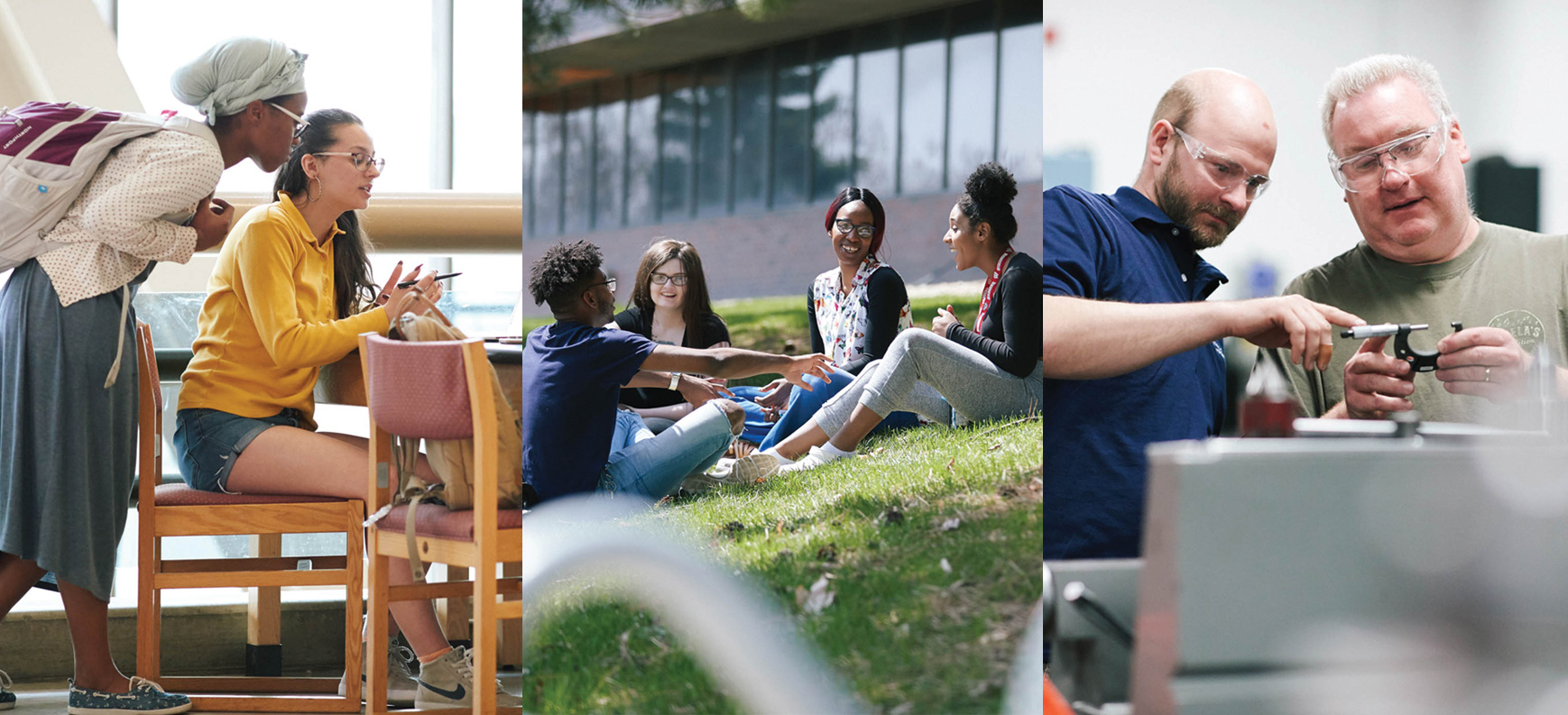About Minnesota State
Minnesota State is the most powerful and effective resource that the state has to ensure opportunity and prosperity for its citizens and communities. Across our great state, the 54 campuses of the Minnesota State system - containing nearly 22.5 million square feet of academic buildings - serve Minnesotans by providing hope and opportunity through higher education. Our 30 colleges and 7 universities contribute to an engaged, equitable, and productive society and serve as catalysts for social and economic vibrancy. They are places of hope and opportunity for Minnesotans who strive to create a better future for themselves, their families, and their communities.
In FY2017, the colleges and universities of Minnesota State generated an economic impact of $8 billion in the state: $4.1 billion direct and $3.9 billion indirect and induced. This impact is the result of operational spending, capital spending (10-year average), payroll and benefits paid to employees, student spending, and visitor spending. Based upon this impact, $1 out of every $42 in the Minnesota economy is supported by Minnesota State.
And in June 2019, we set a critical goal that by 2030 Minnesota State will eliminate the educational equity gaps at every Minnesota State college and university. Equity 2030 will require both intentional systems and culture change and innovation, as well as advocacy and leadership with partners and stakeholders across the state to accomplish, including legislative support from local and state government.
Most of all, Minnesota State is proud of its students and their success stories.
Our 2022-2023 Biennial Budget Request
We seek $120 million in the 2021 legislative session for:
- Campus responsiveness and stabilization: $75 million
- Equity and affordability: $45 million
Campus responsiveness and stabilization:
- Supporting Minnesota State is critical for the state of Minnesota’s economic recovery
- Campuses require on‐going revenue in order to maintain a core level of programs and services
- Funding of inflationary costs and increased campus expenses due to the pandemic
Equity and affordability directly supports our students’ critical needs:
- Student Basic Needs
- Mental Health Needs
- Additional Campus Support Services
- Career and Technical Education
- Open Educational Resources
- New Scholarship programs
Budget Request Summary attached here.
Our 2021 Capital Request
We seek $188.2 million in funding in the 2021 legislative session for a capital program that will improve campus facilities, enhancing our ability to serve our more than 340,000 students. These investments, comprising $160 million in state financing and $28.2 million in college and university support, will reduce operating expenses and directly impact student success through improved teaching, learning, and support spaces.
This request is comprised of asset preservation and campus-specific capital projects that were part of the Minnesota State 2020 capital bonding request, but did not receive funding. The final bonding bill for 2020 passed in the October special session included $90.8 million for Minnesota State; $46.3 million in asset preservation and $44.5 million for four campus-specific capital projects. In 2020 Minnesota State was requesting $271.2 million in capital funding.
Once again, our top priority is asset preservation through HEAPR funding. This request of $103.7 million provides for campus projects across the state addressing the most basic needs for updated roofs, windows, and exterior walls, as well as efficient and effective mechanical and utility systems.
In addition, our request includes $84.6 million for 12 major, campus-specific capital projects across the state. Some of these projects are ready to begin construction, having received design funding in prior legislative sessions; the other projects will execute design and construction together or embark on the design process for construction to be funded in the future.
Together, the requested HEAPR and major capital project funding will:
- improve campus teaching and learning environments and improve student outcomes;
- reduce operating expenses and ease pressure on campus operating budgets;
- enhance science, technology, engineering, math, allied health, technical, business, and education classrooms and labs; and
- streamline student support services to increase student success.
We join our students, faculty, and staff in thanking you for your past support of the colleges and universities of Minnesota State. Your thoughtful engagement and steadfast support allow us to provide all Minnesotans with access to high quality, affordable educational programs that prepare our students to thrive. Thank you for your consideration and support.
Other Reference Materials:
Chancellor Devinder Malhotra embarked on a series of Partnership Tours throughout Minnesota during 2018 and 2019 in support of our legislative requests. During these stops the chancellor and college and university leadership met with local business leaders, employer partners, legislators, K-12 leaders, and community partners. They discussed developing the region’s talent pipeline and how current college or university efforts are achieving results and how further partnerships can be developed. Below are some media stories:
- Northland officials talk boosting hiring (Duluth News Tribune, 10/4/18)
-
Chancellor praises technical education collaboration (West Central Tribune, 10/10/18)
-
Minnesota State chancellor talks training for jobs (Marshall Independent, 10/12/18)
- Working together to meet pressing workforce needs (SC Times, 10/19/18)
- Commentary: Working Together to Meet Pressing Workforce Needs (Hutchinson Leader, 11/21/18)
-
At Minnesota State campuses, a push to team up with employers (Star Tribune, 11/23/18)
- Two area colleges highlight partnership program with local businesses that ensure students are career-ready (KTTC, 11/27/18)
- Minnesota State Chancellor Visits RCTC to Talk About Workforce Shortages (KIMT3, 11/27/18)
-
Rochester’s labor shortage? It’s becoming more urgent (Rochester Post Bulletin, 11/27/18)
- Column: Working together to meet pressing workforce needs (Red Wing Republican Eagle, 12/27/18)
- Universities, business must collaborate on workforce needs (Free Press, 1/1/19)
- Working together to meet pressing workforce needs (Austin Daily Herald, 1/15/19)

